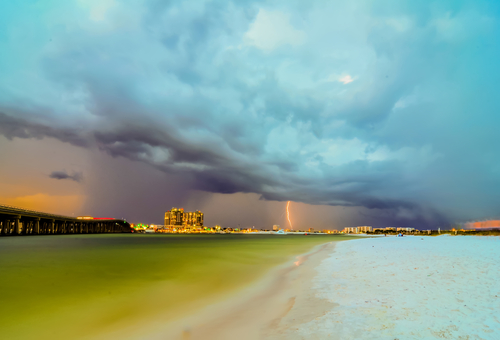Florida's Lightning Claims and Prevention Guide

Lightning related insurance claims have been climbing in recent years. In 2023, there are over 70,000 lightning claims and insurers paid out over $1.2bn in insurance claims that were related to lightning according to the Insurance Information Institute (Triple-I). This is up more than 30% from $950mn.
Lightning caused homeowner insurance claims climbed 13.8% between 2022 and 2023 jumping from 62,189 to 70,787. Shockingly, the top 19 states for lightning claims contributed to more than half (57%) of the total increase. The cost of lightning claims is also increasing with the average cost jumping 14.6% from $15,280 in 2022 to $17,513 in 2023.
Climate Change May be Responsible
As climate changes produces warmer air, the resulting warm, moist air creates drenching thunderstorms that typically come with lightning. These types of storms can also result in tornadoes, hail, or destructive straight-line winds.
The increasing cost of lightning claims may be the result of a variety of factors. “Rising inflation, including higher replacement, construction and labor costs impacted claim costs for the year,” said Sean Kevelighan, CEO of the Triple-I in a recent Reinsurance News article.
Florida was the number one state for lightning claims in 2023 with over 6,003 claims. Texas had the highest average cost per claim at $41,654.
Lightning damage is covered by most standard homeowner policies as well as any resulting fire damage. Damage caused by lightning related power surges is usually covered as well.
A few tips for preventing lightning strikes
While there is no way to predict or prevent lightning strikes here are a few tips to help lower your risk.
Unplug devices: When a storm is on the way, unplug appliances, TVs, computers, as well as other electrical equipment.
Install a whole-home surge protection
A whole-house surge protector can be installed at your main electrical panel, but this must be done by a professional. Look for a system that has a battery backup in the event you lose power at your home.
Always use surge protectors
Always use surge protectors, which are different from a standard power strip, for any device you wish to protect from lightning damage.
Make sure your home is grounded
Make sure the electric panel for your home has a grounding system outside. If it is not properly grounded outside the home, lightning will look for a ground inside your home which will do much more damage. Have a professional install a lightning protection system which can include lightning rods, conductors, grounding, and surge suppressors.
